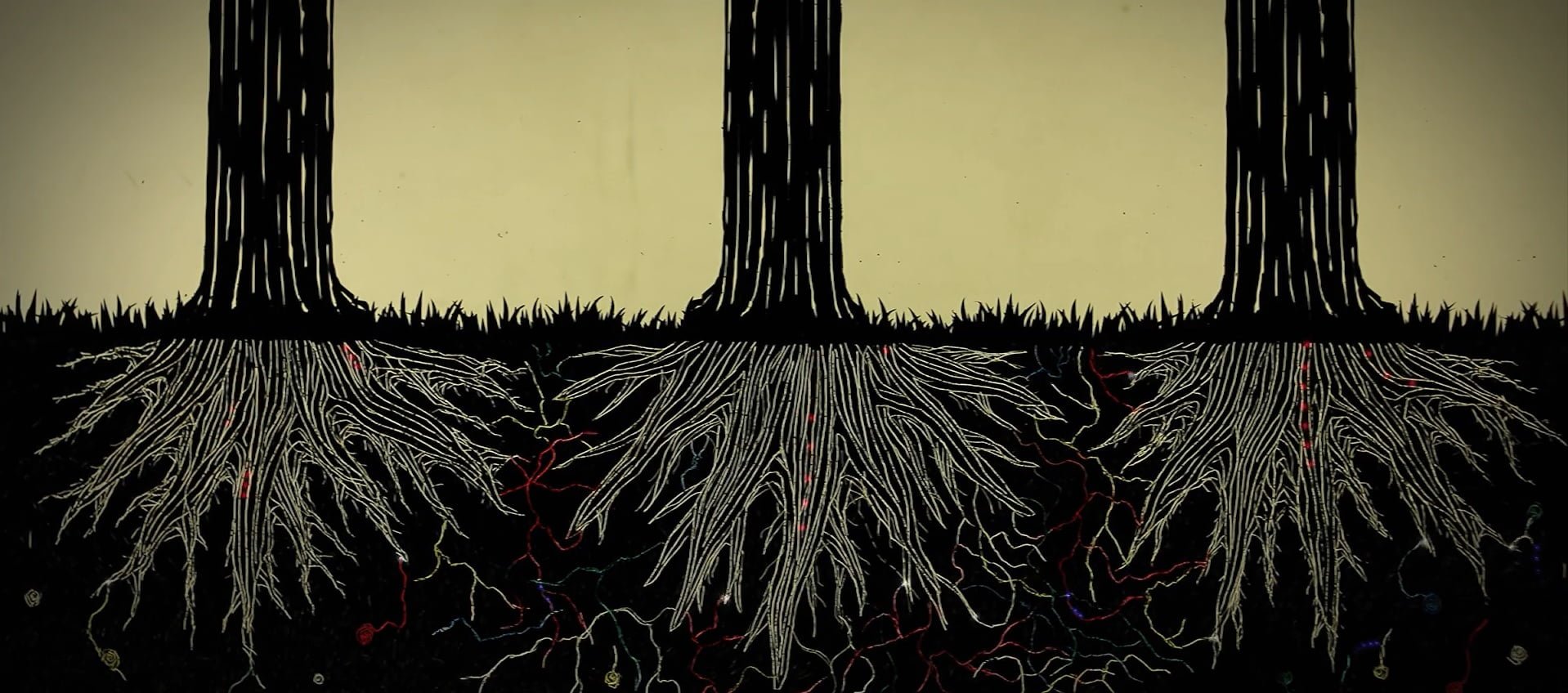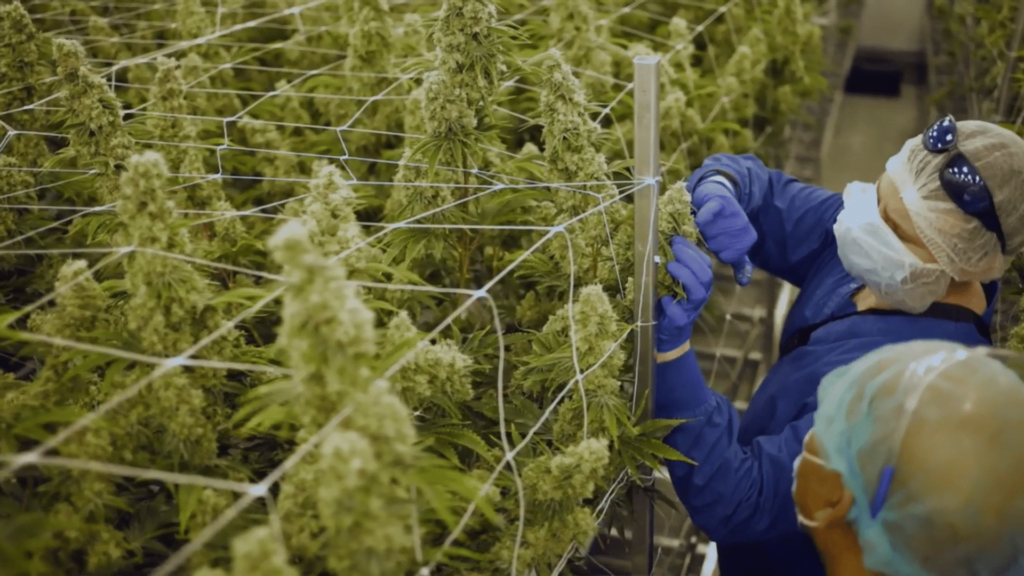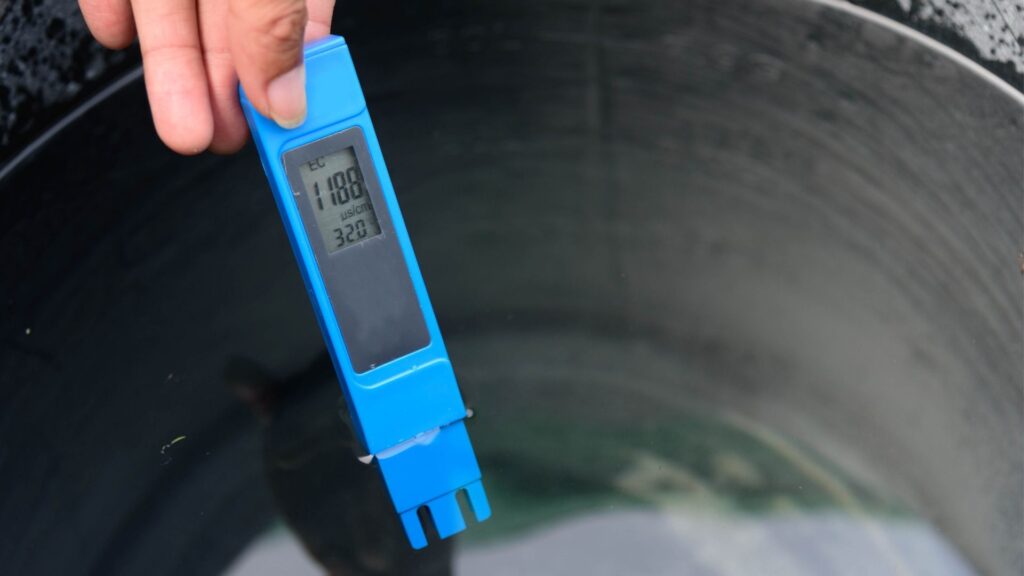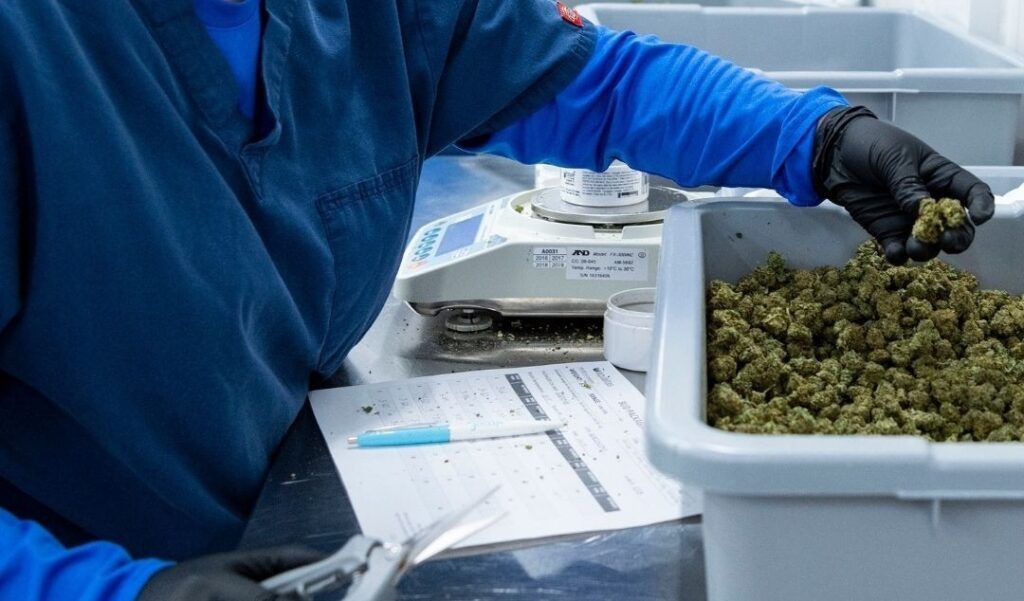Boosting Cannabis Plant Yields And Health With A Billion Year Old Technology
Like all members of the plant kingdom, cannabis has four basic needs to grow and survive – light, carbon dioxide, water, nutrients, and space. Although the formula may seem simple, growing and boosting cannabis plant yields efficiently is complicated and requires technical skills. As a grower, you will need to consider well-balanced nourishment for healthy and high-yielding cannabis plants.
Two common challenges faced by a grower are providing the plants the correct nutrition at specific stages of growth and preventing pests and diseases from threatening of boosting cannabis plant yields. Although several techniques are available to make sure these two are covered – from genetic selection to agronomic techniques involving plant physiology, soil science, entomology, and plant pathology among others, it can sometimes be daunting for growers to achieve the perfect mix and match of these techniques; worse, it can cost a ton.
Sales Manager @ Dynomyco, Ari Singer, shared how billion-year old technology mycorrhiza can solve most of growers’ problems during his session “Mycorrhiza Run-Down” at The Grower’s Source Expo:

“You can grow it [cannabis] in a hydroponic system and an aeroponicsystem without any fungi, but the fungi are key[,] and your plants will grow better with the fungi.”
—– Ari Singer, Sales Manager @ Dynomyco
The use of mycorrhizal fungi is a jack-of-all-trades technique and can make growing cannabis more cost-effective. Increased cannabinoids, improved plant nutrition, decrease the need for water, less fertilizer, increase pathogen resistance and increase stress tolerance – what more can you ask for?
What is Mycorrhizae?
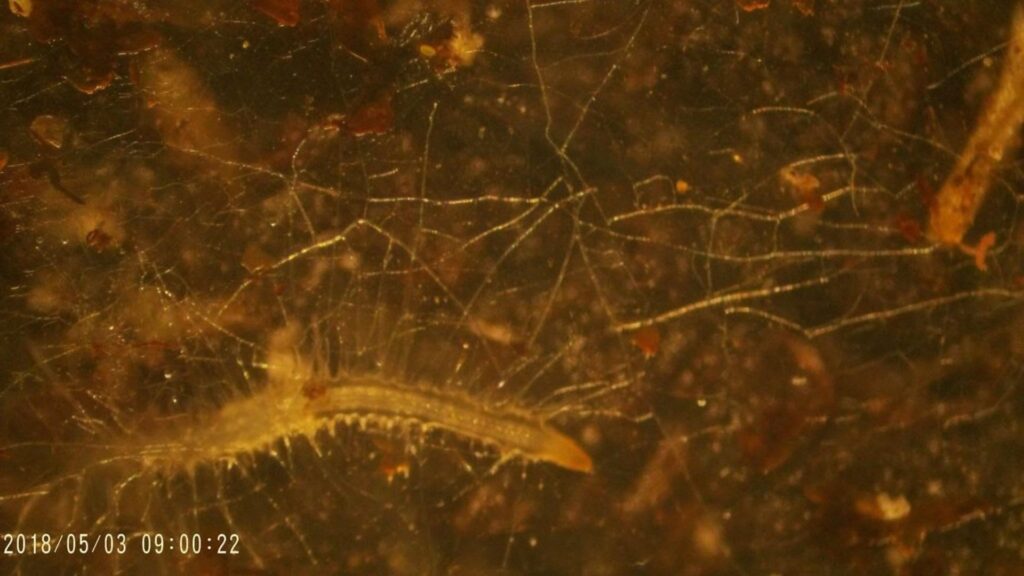
Mycorrhizae (“myco” means fungus; “rhiza” means root) is the mutualistic relationship between plants and fungi. Approximately 90% of plant species have been benefiting from their association with fungi since around 400 to 450 million years ago at the very least.
“It’s [mycorrhizal fungi] been known for about 150 years, and it’s been extensively researched for the last 50.”
—– Ari Singer, Sales Manager @ Dynomyco
The first relationship between myco and rhiza happened when plants moved from water to land. They did not have roots and relied on mycorrhizal fungi for nutrient absorption from the soil. Mycorrhizal fungus provides the plant mainly phosphate and nitrogen and improves your plant’s response to drought, salinity, heavy metal stress, and root pathogens. In exchange, the plant provides the fungus with sugars for food. Everybody wins.
How does Mycorrhizae work?
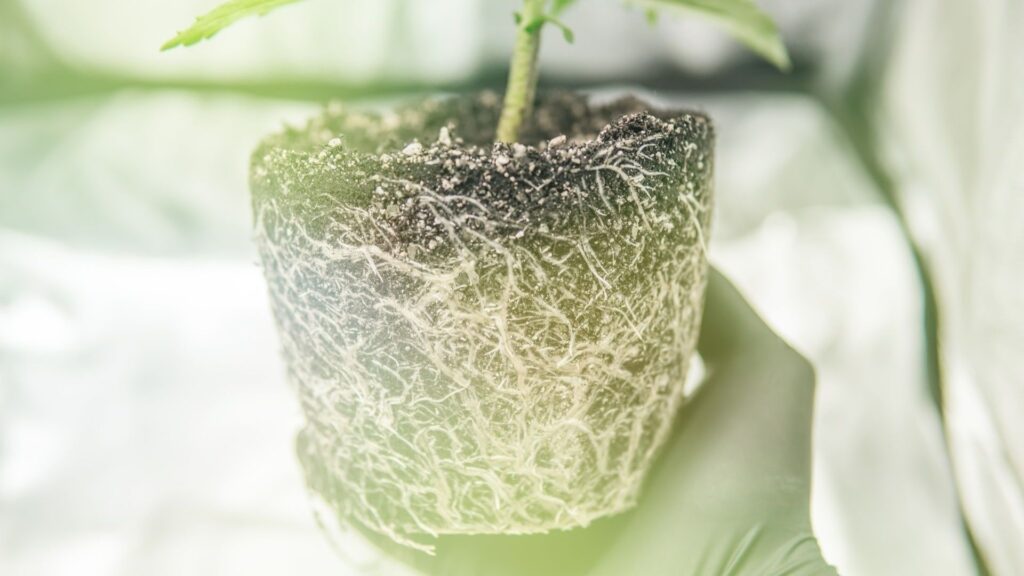
Mycorrhizal fungi form a large network of hyphae (filamentous parts of the fungus) in the soil. Under the microscope, they look like a spider web. The hyphae extend from the inside of the roots; it has vesicles where they store sugars provided by the host plant. By acting as an extension of the plant roots, mycorrhizal fungi can absorb more water and nutrients that the plant would not reach by its roots alone.
“…the plant will be able to absorb nutrients, which are physically out of its reach with the help of the fungi, and that’s why they say that it [mycorrhizal fungi] extends the root system by 10 to 100.”
—– Ari Singer, Sales Manager @ Dynomyco
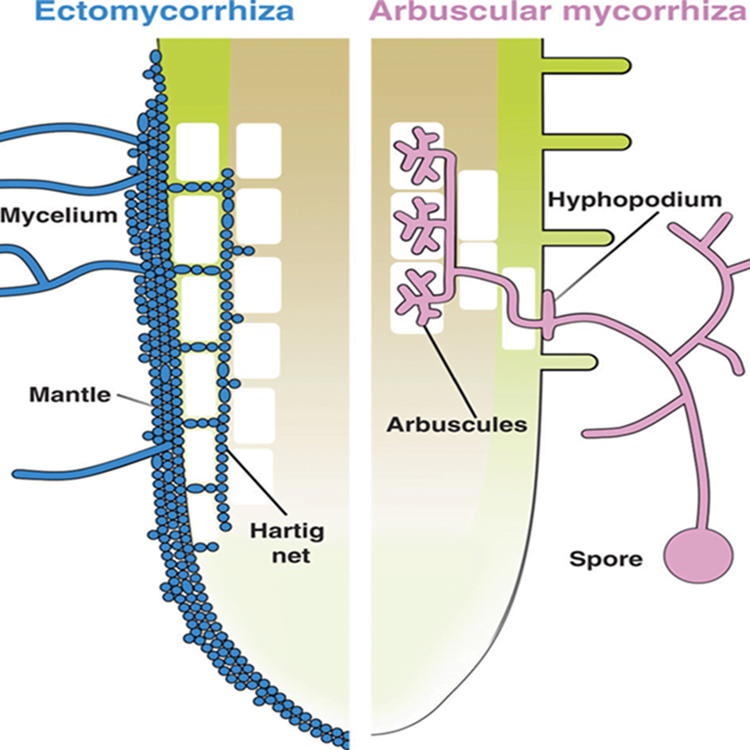
– Credit: Paola Bonfante
Mycorrhizal fungus can be typed as arbuscular mycorrhizal (AM) or ectomycorrhizal (ECM), differing in their structures and association with plants. AM associates more deeply in the plant’s core than ECM, such that it also pierces through the inside of the plant cells. A number of land plants associate with fungi this way. AM fungi rely completely on the host plant to reproduce. Proteins called “transporters” bring nutrients from the fungus to the root cells and vice versa. ECM fungi are also quite aggressive in nutrient absorption such that it releases degradative proteins to process waste and use them as organic nutrients.
Dynomyco’s mycorrhizal fungi are available as a whole inoculum, which means it contains spores, hyphae, and root fragments. You may mix it with the soil from the start of growing and during repotting.
Benefits of Mycorrhizal fungi
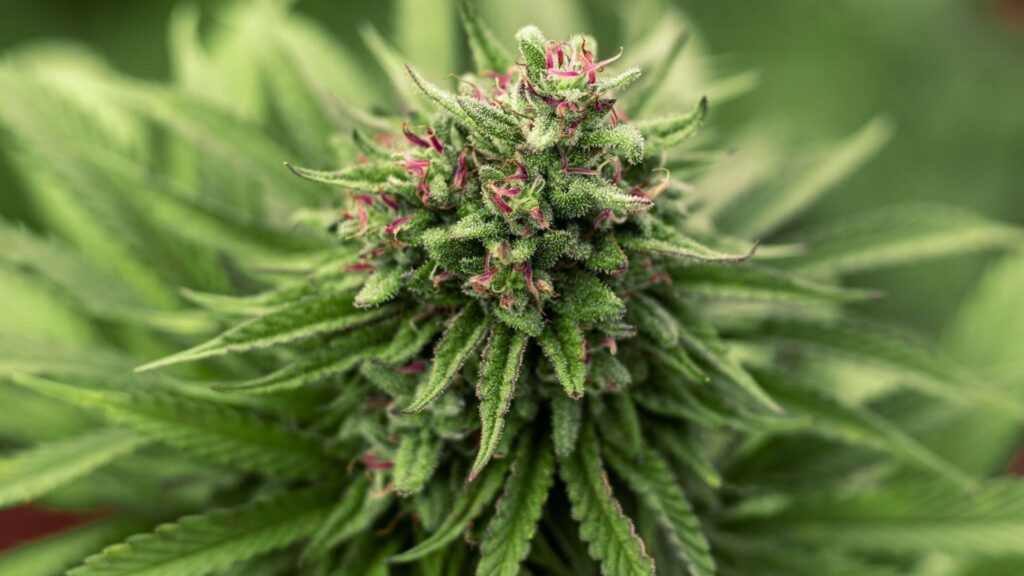
1. Increased phosphorus uptake
How would you like better flowers for extraction? In general, phosphorus is used by plants as energy to power food production through photosynthesis, a major player in plant growth and establishment. For instance, it is an integral part of nicotinamide adenine dinucleotide phosphate (NADP+), a metabolic player that transports the energy obtained from light to the site of sugar production. In cannabis, increasing phosphorus intake can give your plants better flowering and this is good for boosting cannabis plant yields.
“Most notably it’s an increase in phosphorus uptake and that’s pivotal when you’re growing cannabis; it [phosphorus] is responsible for flower production.”
—– Ari Singer, Sales Manager @ Dynomyco
In cannabis, phosphorus plays an important role in bud formation. During flowering, cannabis plants absorb phosphorus in large quantities. Mycorrhizal fungi can boost this absorption by releasing enzymes that degrade phosphorus bound in the soil or coco peat into a form that can be used by your cannabis plants. The fungus’s hyphae are thin that allows it to penetrate hard to reach parts of the soil and thus, harvest more nutrients for your plants. In cannabis, increasing phosphorus intake can give your plants better flowering.
2. Increased macro- and micronutrient uptake
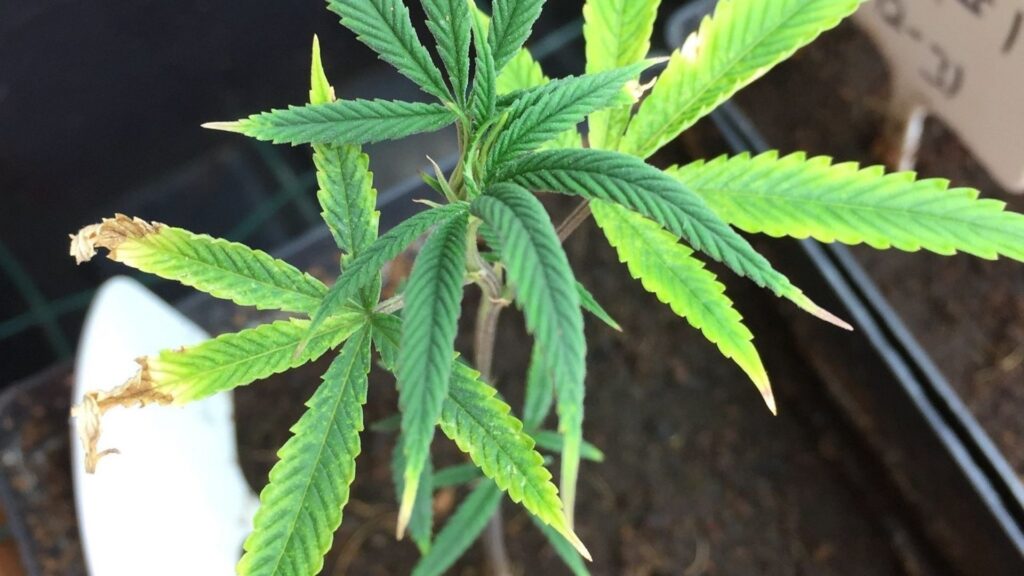
Leaves are also of major concern for growers, and a lot of their quality has to do with macro-and micronutrients absorbed by the plant. Among other nutrients needed by plants to grow are nitrogen, potassium, zinc, iron, manganese, and copper. Nitrogen is a component of chlorophyll, a pigment used by plants for absorbing light needed for photosynthesis. Nitrogen deficiency in cannabis is manifested by the yellowing of the leaves; this can lead to smaller plants and fewer leaves – equating to less yield for the grower.
The fungi can process nitrogen present in the soil and feed it to the plant. In fact, plants that live in areas with low soil nitrogen levels are associated with ectomycorrhizal fungi in order to survive.
Other nutrient deficiencies can involve necrosis of leaves for potassium deficiency, slower growth rate and smaller leaf size for magnesium deficiency, and bronzing of young leaves for zinc deficiency. All these can be improved by mycorrhiza by increasing the access of plants to soil nutrients.
3. Increased Cannabinoid levels
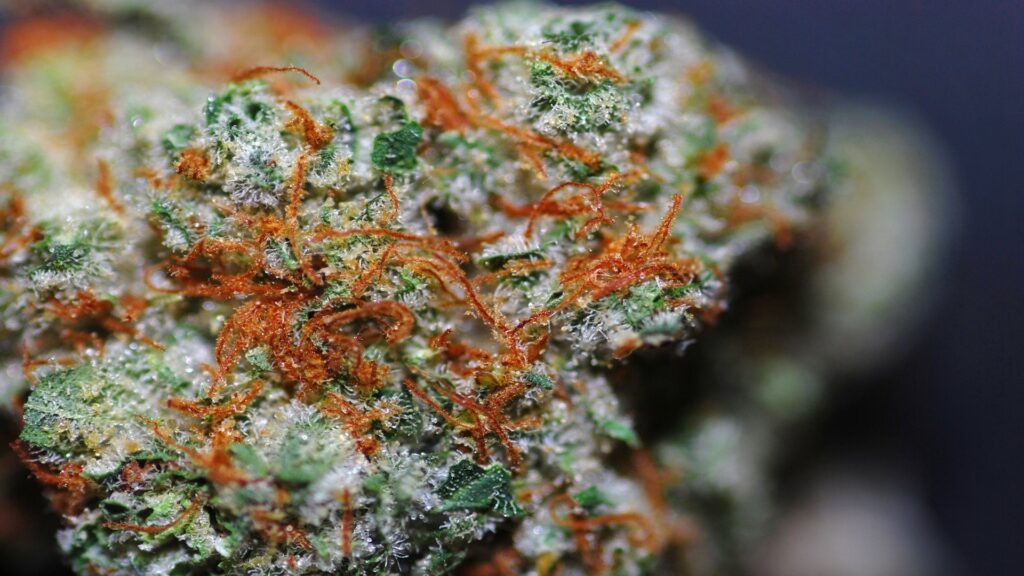
– Credit: @nugsaplenty Flickr
Cannabinoids are a wide group of chemical substances that are used for relieving nausea and vomiting amongst just a few of their benefits. The highest amount of cannabinoids in cannabis can be found in the flower trichomes, which are protruding structures on the surface of the leaves, stems, and buds of the plant. For a grower, boosting cannabis plant yields is a major concern — and its yield per plant is often a goal.
Fortunately, Dynomyco has done a lot of research about this through different field trials with Pharmocann and Seach Medical, companies that grow cannabis with different methods and locations.
“We tested the yield, [and we saw an] increase [in] the cannabinoid levels in the plants…”
—– Ari Singer, Sales Manager @ Dynomyco
Ari also said that leaves and stems also increased in yield during the mycorrhiza field test.
4. Work with beneficial microbes for more nutrient uptake
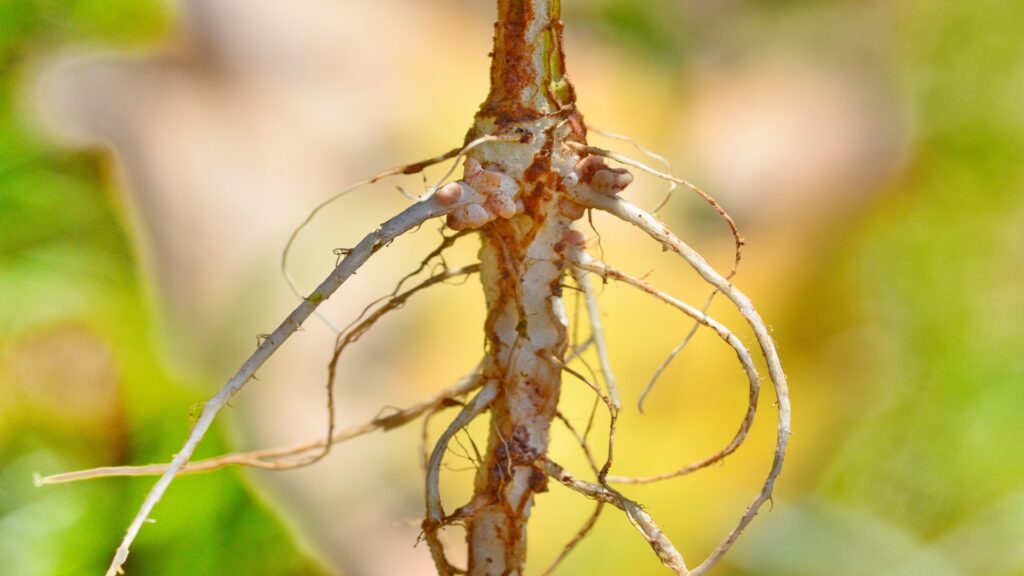
– Credit: Shutterstock Stock Images
We talked about how mycorrhiza enhances the uptake of nitrogen; but what if there is not enough nitrogen in the soil? Here’s when the role of other microorganisms in the soil gets interesting. Rhizobium is a bacteria that convert nitrogen gas to ammonia, a more readily absorbable form of nitrogen. They are particularly associated with legumes. When Rhizobium is present with mycorrhizal fungi in the soil, more nitrogen can be absorbed by the plant.
5. Stress tolerance
Drought, salinity, and heavy metal stresses are of major concern for any farmer, especially cannabis growers. Water shortage reduces water flow and nutrient uptake. Salinity stress reduces yield and plant development. Heavy metals cause small plants, leaf discoloration, and ultimately, plant death.
Mycorrhizal fungi counterattack the effect of drought by getting more water and nutrients in further and deeper parts of the soil that plant roots cannot reach. Their application to several crops improved plant response to salinity. Most importantly, they prevent heavy metals from reaching the plant roots by capturing them in the hyphae. As the fungi absorb more nutrients and water, it is more capable of surviving through different types of stress, boosting cannabis plant yields.
“…if your plant is eating healthier, it has more nutrients, it’s absorbing more water. It’s going to be able to combat more stress, more pathogens.”
—– Ari Singer, Sales Manager @ Dynomyco
6. Prevents water and nutrient loss in the soil
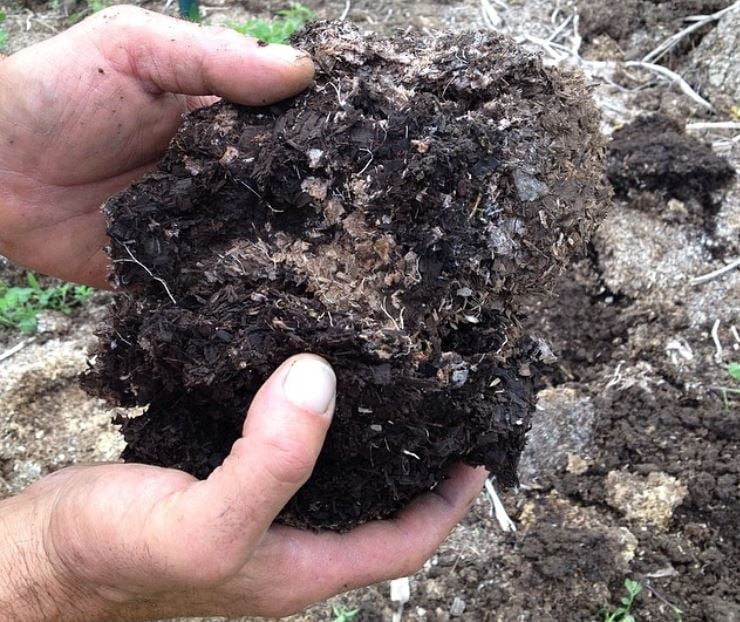
Erosion can cause a loss in water and nutrient content in the soil. Mycorrhizal fungi form a complex network of hyphae in the soil that hold soil particles together. Along with this, they release a glyco-protein protein called “glomalin,” which acts like a glue that causes the soil to aggregate. When the soil has the correct amount of compactness, water is retained better. More water and nutrients will be available for your cannabis plants to absorb.
7. Pathogen resistance
When you look at the soil under the microscope, you will see several microorganisms, and most of them are more harmful than useful for your cannabis plants. They compete with each other and with the plant for nutrients in the soil.
Mycorrhizal fungi can block the growth of potentially harmful microorganisms and promote the growth of beneficial ones. When beneficial bacteria and fungi work together to enhance plant growth and get their nutrients in return, they will dominate the soil and stop the harmful ones from growing before they even try. They may also alter the structure of the root such that it is protected from the invasion of harmful microorganisms.
Taking advantage of mycorrhizal fungi in your cannabis grow rooms saves you effort, time, and money while boosting cannabis plant yields. The fact that they are also eco-friendly is a major plus. Hit many birds with one stone through this old but effective technology. Ari Singer ends his talk by reminding us to “spread spores, not wars.”
Featured Image Credits: Animated Film by Toby Kiers and the artist Niels Hoebers

Want to keep the discussion going?
Log onto The Grower’s Source App to ask a question of our group of experts, or to read up on the latest comments on this topic.
You can also engage your fellow master and hobby growers about many other cannabis topics on your Grower’s Source App.

CONNECT
Connect and maintain relationships between you and other Canadian cannabis industry growers.
COLLABORATE
Overcome challenges together with your fellow growers, learn, develop collective knowledge and a global competitive edge.
GROW
Grow better, aim for sustainability, quality, and cost-effectiveness.




